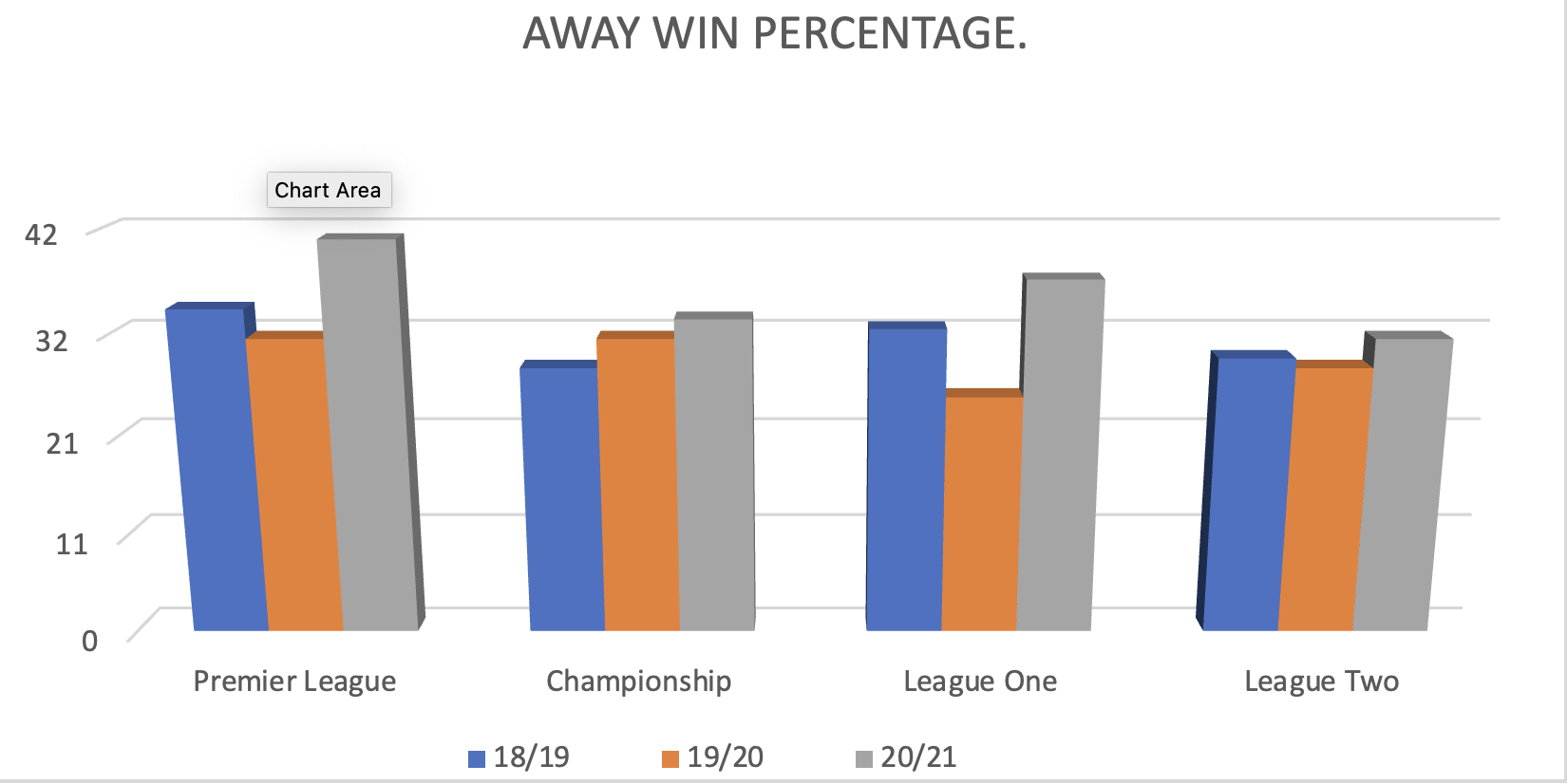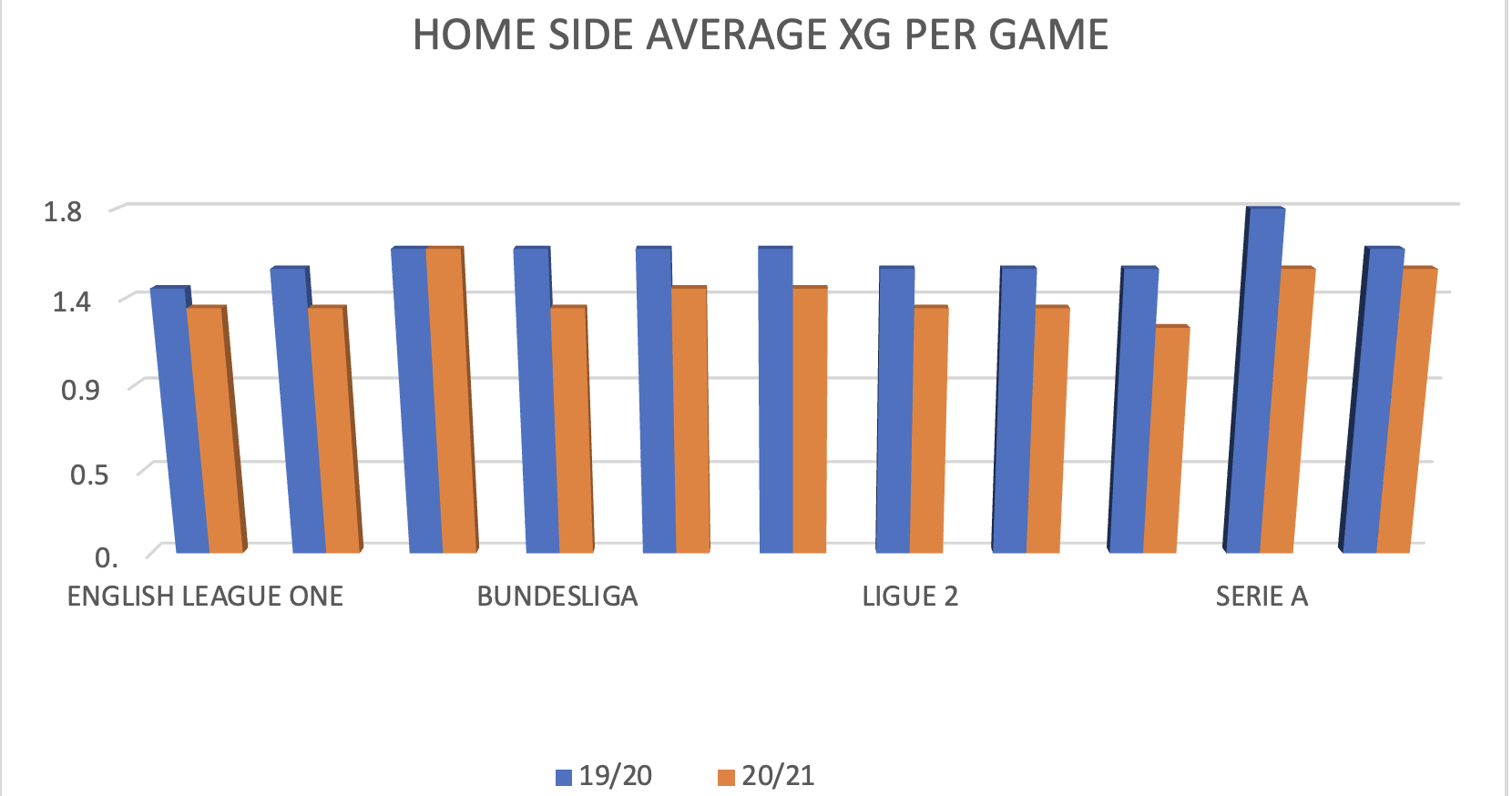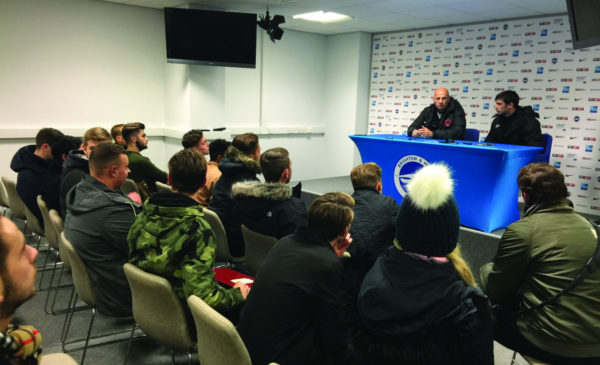By Sam Stone
The scenario is normal for us now. The once ‘alien’ prospect of football without fans has since become the accepted reality for the football world. As fans crammed into trains, gathered in pubs, and chanted in the stands back in the early months of 2020, the prospect of football moving towards the restricted world of COVID-19 would certainly not be the topic of pre-match discussion. Empty stadia, crowd noise, and a fixture schedule more reminiscent of a baseball season are what we have been left with. Stadiums sit hollow and lifeless, players adhere to peculiar protocols, and a fortunate few get to witness the action. As the Coronavirus ebbs into a steady retreat and vaccines inoculate hundreds of thousands each day, the end is in sight. The prospect of getting on a train, enjoying a drink, and going to watch your beloved team could soon be on the horizon. Yet, this initially ‘novel’ virus has left a significant dent in the football landscape. Fans, players, officials, owners, Journalists, and the list goes on. The restrictions that have left our beautiful game trapped behind closed doors have indisputably been the key catalyst in creating a sizeable blow to the industry. This study will look at how the ‘COVID world’ and associated lack of crowds may have influenced three integral components of football; players, referees, and, of course, fans. Findings draw from existing research, 1st hand interviews with an EFL player, a Championship Referee, arguably, a ‘World Famous’ fan, and an online survey.
A Players perspective
Let us begin with the main antagonists in the ‘COVID footy world’; The multi-million-pound players. Although they’ve been playing behind closed doors for the best part of eight months, the prospect of playing a high stakes professional match in front of thousands of empty seats cannot, even now, feel normal. This point is clearly expressed during an interview with Carlisle United winger Brennan Dickenson. He said: “It’s different, it’s like academy football, it’s unusual and not having fans is a bit boring.”
“You lose the whole atmosphere; it doesn’t feel like a professional game, it feels more like a training game.”
Carlisle United Winger Brennan Dickenson
Two prominent areas where the crowd’s presence may influence players are ‘home advantage’, and ‘expected goals’ (XG). Both areas are measurable pre and during Covid restrictions.
Home advantage
In the UK, Stadia up and down the country have long been theatres for lively atmospheres, with roaring crowds, intuitively, the difference in gaining the edge over the visiting team: The influence of supporters on home advantage is a clear place to start. Some clubs are renowned for being home to atmospheres that are more reminiscent of a bear-pit than a football ground, wedged amongst an urban town’s inner sanctums. Stoke City’s browbeating Brittania, Portsmouth’s Fierce Fratton, and Liverpool’s overawing Anfield Kop, to name a few. In line with the statistics on home advantage, it is hard for away teams to muster even a precious point. The top four tiers of English football have seen the home win percentage prevail every season since records began.
Embed from Getty ImagesFurther evidence of ‘home advantage’ comes from America. The MLS has seen a home win percentage of 49.4 over 15 years, compared to 26.5 percent for the away side. The home win percentage rises further to 59.4 percent in crucial playoff matches. The NFL witnesses a similar set of statistics, with the home side winning 55 percent of the time. ([ii]) ([iii]) ([iv])
Of course, it is important to try and identify crowd impact upon ‘home advantage’. In Italy, a study by Vincenzo Scoppa looked at crowd support in derbies between teams who play in the same stadia. Italy has become a unique footballing landscape because several teams share stadia. Lazio and AS Roma, Inter and AC Milan, Hellas Verona and Chievo, and Genoa and Sampdoria all share their home arenas. This, importantly, allowed Scoppa’s study to truly highlight the impact of home fans and eliminate any other mitigating factors, such as home team familiarity and the role of travel fatigue on the away team.
Crucially, the study found that the home team consistently scored 0.45 more goals than the ‘visiting’ team and were 15 percent more likely to win in the same stadium derbies. [v]
Intuitively, this well-documented bias should diminish; the ‘behind closed doors’ era should see the illusive away win percentage creep up. Along with many fans, this view is shared by professionals close to the game. Carlisle United winger, Dickenson, believes the dynamic has shifted this season: “The fans help massively, even 2000 fans make a huge difference.
You don’t get anything anymore, no motivation, no abuse, and the sense of playing home and away have gone.”
This line of thought is echoed by Portsmouth CEO Mark Catlin, who in a recent interview on the club’s website, said: “Portsmouth are well backed at home and had one of the best home records in the country last season (unbeaten), this season our home form has been poor.”
“You look at Liverpool; they haven’t lost four in a row at home since the 1940s, and teams like West Ham, who have been very successful this season, when last year the London Stadium was as toxic as you can get.”
– Portsmouth ceo mark catlin
The Facts
To test these popular assumptions, the away win percentage in the UK compared to the last two seasons was analysed to test these popular assumptions. The home/draw/away percentage from the previous three seasons (Whoscored.com) was compared.

The results show a marginal increase in away win percentage in all 4 Divisions for the 20/21 season. The most significant is in Division 1 (21% to 33%) from the previous, non-Covid, year. However, it can be seen that during the 18/19 season (another non-Covid year), the away win percentages were also higher (except The Championship). This point casts some doubt on the accuracy of using just the ‘away win percentage’ to show the effect of no crowds.
Data analyst for the Athletic, Mark Carey, also errs on the side of caution: “You have to always be careful because if there’s a relationship, it doesn’t mean it’s because of it. It is important to remember correlation is not causation,” said Carey. [i]
He added: “Research like this lends itself nicely to next season; it will be interesting to see if those who have struggled and those who have done well will have an equilibrium next season.”
However, Mark also suggested that research into players’ physiology could be a good way of assessing the impact of empty stadia this season: “Looking at players performance would be a good way of evaluating a physiological difference in performance. Measuring Testosterone or Adrenaline could be a good way, whether it is possible, I am not sure,” said Carey.
Professional footballer Dickenson added to this as a line of research. He said: “just being in a full stadium provides new-found levels of adrenalin; I bounce off the noise of a stadium, hearing the noise from a stadium gives me shivers down my spine.”
“The adrenaline makes me feel like I can play 180 minutes, however when you’re losing, especially at home and the crowd goes quiet, and you feel tired, and you just want the game to end.”
Brennan dickenson
Taking the ‘away win’ data and these suggestions into account, this study looks more directly at players’ performance and how a lack of crowds may influence this.
Impact on XG
XG (expected goals) Statistics is a popular predictive model used to assess every goal scoring chance and the likelihood of scoring. Differences in XG statistics could be an excellent way to determine how teams and players perform on the pitch regarding the intent they are playing with. As highlighted by both Carey and Dickenson, a lack of crowds may be reflected in such performance stats.
This season has seen a clear difference in the expected goals compared to the 2019/20 Premier League season. Every single Premier League side has seen a drop in their XG (except for Newcastle United). Although it is not impacting thel result significantly, the lack of a baying crowd has seen the quality of the home side’s performance fade. Teams such as Burnley and Sheffield United, who, usually, look to ‘grind out’ results, with their fans being an integral part in making the experience hostile for the away side, have been hit the hardest. This drop-in XG may indicate that teams are more content in sitting deep and grinding out results instead of attractive, attacking football as often demanded by the crowd. [ii]This shift in Premier League XG is replicated in Europe. After calculating the home side’s average XG from the top two Leagues in Europe’s top five countries, these were the results.
The chart above contains the average home expected goals for the top two leagues in Germany, Spain, France, Italy, and the top three from England. The findings display a clear difference in the expected goals in the 20/21 season compared to the 19/20 season. This season has seen an average of 1.3 expected goals for the home side, compared to 1.6 last season. [i]
This decline in XG points towards a lack of attacking intensity. The home side are simply not creating as many chances. One theory for this relates to ‘Social Facilitation’, the basic concept that people perform better when watched. Research by Amanda L. Snyder in 2012 found that competitive individuals showed higher intensity in a cycling task when they were being observed. The presence of a small crowd made them work harder, perhaps to impress or prevent negativity from being cast on their performance. [ii]
With a background in psychology, Data Analyst Carey informed me of similar research called the ‘Audience effect.’ He said: “The audience effect is the presence of an audience boosting performance, but it can go one of two ways.
“If you aren’t good at something, someone watching it can make you worse, whereas, if you are an elite player, it has a beneficial effect.”
He added: “You want to put a show on; it’s like the arts.” Zajonc’s (1965) Drive Theory (Social Facilitation) further supports the concept of a crowd improving overall performance. It suggests the presence of others can lead to an increase in arousal and, therefore, more intent and effort to work and create chances. [iii]
During Covid times, it is intuitive and attractive to assume that the lack of crowd has impacted both results and performance at football matches. Statistics show an improvement in away sides results. This is in line with research by Vincenzo Scoppa, which highlighted the importance of crowds for the home side in the same stadium derbies. However, as shown with the input of Mark Carey, it is imperative not to state that these statistics are solely due to the lack of crowds. There may be plenty of supplementary variables, such as game state, VAR, and referees’ performance, affecting this season’s results. The scenario is very similar when analysing the XG statistics. There is a solid basis for assuming that players are creating less good quality chances this season on the surface. This was displayed in previously mentioned research into Premier League XG and research into the decline in XG across Europe’s top 12 leagues. There is also research and theories to support why a decrease in XG might be happening. The audience effect and social facilitation could impact the level of arousal that players are experiencing this season compared to last. ([iv])([v])
But, returning to the views of experienced Data Analyst Carey, “You have to remember variables when talking about XG”.
He added: “When crowds are in the stadiums, the XG could be lower anyway for the home side due to game state; look at Everton; for example, this season, they score early and sit on a lead.
Embed from Getty Images“They don’t need to go take another shot, and that will impact their expected goals; it may just be the way the game is turning out.”
When crowds return, more data will allow for more accurate assumptions, and Carey helpfully suggests future methods of research: “In regard to the Social Facilitation effect, getting a subjective response from players on their personal performance this season would be interesting.“
8 Footy stats Expected goals information. Retrieved from https://footystats.org/england/premier-league
9 synder., A. L., 2012. Virtual and Live Social facilitation while Exergaming: Competitiveness moderates exercise intensity retrieved from Human Kinetics Journals, 34(2), pp. 252-259.
10 Joshua M, F. J. R. A., 2006. Social Facilitation: A test of competing theories retrieved from Journal of applied psychology, 36(5), pp. 1087-1109.
11 Clarke, S. N. J., 1995. Home ground advantage of individual clubs in English soccer.. The statistician, Volume 44, pp. 509-521.
12 Oberhofer, H. P. T. W. H., 2010. Distance matters in away games: Evidence from the German football League.. Journal of Economic psychology, Volume 31, pp. 200-211.
[i] Interview with Mark Carey. Zoom call on 07/04/2021. Fanalytics.pod@gmail.com
[ii] Therveshan, 2020. Thevershan. [Online]
Available at: https://therveshan.medium.com/football-without-crowds-does-home-advantage-exist-anymore-5654ad01e87e
[i] Interview with Brennan Dickenson, Zoom call on 06/04/2021. 07581075807.
2 Callum Williams. (30/01/2020) Home advantage explained retrieved from Colossus Blog. https://www.colossusbets.com/blog/home-advantage-explained/
3 Ben Owen. 25/02/2020. How important is home field advantage in the NFL retrieved from LINEUPS. https://www.lineups.com/articles/how-important-is-home-field-advantage-in-the-nfl/
4 Adam Smith (20/07/2017) Sky sports bust common football myths retrieved from Sky sports football website. https://www.skysports.com/football/news/11096/10955089/sky-sports-bust-common-football-myths-home-advantage
5 Scoppa Vincenzo, M. P., 2016. Does home team advantage depend on crowd support? Evidence from same-stadium derbies. Journal of Economic psychology, 19(4).









